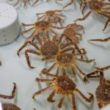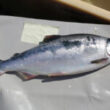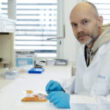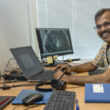SIS Frontiers
New frontiers in salmonid biology

Diseases and disorders affecting the heart, skin, and gills are major challenges to salmon health and welfare. In SIS Frontiers, we will explore new frontiers in understanding the functions of these organs, including newly studied mucosal organs, to connect current scenarios with biological insights.
Start
01. Jan 2025
End
31. Dec 2027
Funded by
Nofima
By linking fundamental science with industry-relevant questions, we aim to demonstrate that neither should be the sole determinant of progress; rather, both play equally decisive roles in generating new knowledge and driving technological innovation.
New Frontiers in Salmonid Biology – A webinar series
In the inaugural webinar of New Frontiers in Salmonid Biology, 17th of June 2025, the Scientists Erik Burgerhout and Rob McFarling presented some recent advances in our understanding of salmonid development.
Background
Health and welfare concerns remain a significant challenge for the Atlantic salmon aquaculture in Norway. Despite generating substantial export revenues of NOK 105.6 billion in 2022, an increase of NOK 24.4 billion from 2021, a concerning statistic from 2023 reveals that 100.5 million farmed salmon died – 37.7 million smolts and 62.8 million in the seawater phase. This alarming trend is further exacerbated by climate change, which pushes salmon to their physiological limits for prolonged periods, exposing them to compounded stressors at a much greater magnitude than in the past. To provide wider insight into how fish respond to the changing environment, it is important to acknowledge that fish under natural scenarios are exposed to multiple factors, often, simultaneously.
Several strategies have been implemented to address problems hampering fish health and welfare on farms, including using biomarkers for health, operational welfare indicators, new production systems, monitoring frameworks, and decision-making tools. While these approaches may be helpful in some cases, the overlooked caveat is the oversimplification of the complexity of biological systems. We have developed systems to rate what is ‘good’ or ‘bad,’ yet we often fail to explain the biological relevance of these numbers.
Addressing industry challenges requires a deeper understanding of fish biology. While we have a solid foundation in salmon biology that has been crucial for its growth and development, emerging technologies now enable us to study structures and functions with far greater resolution and depth. While traditional laboratory techniques will still be in use, they must be complemented with new and advanced technologies that will enable us to study physiological systems in a wider scope. Expanding our knowledge of salmon biology will allow us to better align preventive and prophylactic measures with the species innate and adaptable physiological traits.
Goal
The overarching goal of SIS Frontiers is to leverage new technological and research advancements to gain novel insights into salmon biology, specifically addressing persistent challenges faced by the industry. Specifically,
- Uncover the immunological features of the least studied mucosal organs.
- Provide new insights into the interplay of branchial and cardiac functions.
- Develop new models and tools to study stress physiology.
- Identify novel functions of skin in relation to biological and environmental stress.
- Create a communication and dissemination plan of action to improve the implementation of industry-relevant results.
How we work
SIS Frontiers is a 3-year project divided into 5 Work Packages (WP).
- WP1 will focus on the structure and immune functions of the least studied mucosal organs.
- WP2 will provide new insights into cardiac physiology and integrate advanced tools.
- WP3 will develop novel models and response metrics for stress physiology.
- WP4 will explore previously unknown features of the skin.
- WP5 will synthesise the results from WP1-4, translating them into practical knowledge for industry application.
Strategic priority areas
Nofima invests its own resources in order to increase competence in useful, relevant and innovative areas and strengthen our position among the leading applied research institutes.





